
A Chinese palace stands as an imperial complex encompassing the court, civil administration, royal gardens, and defensive fortresses. The structures are both extensive and intricate, symbolized by the Chinese character “gong” (宮), signifying two interconnected rooms (呂) beneath a roof (宀). Initially referring to any residence or mansion, this term became exclusive to imperial dwellings since the Qin dynasty (3rd century BC).
Comprising numerous buildings, a Chinese palace boasts expansive areas encircled by walls and moats. Among its features are grand ceremonial halls (殿) for official functions, alongside smaller skyscrapers, temples, towers, residences, galleries, courtyards, gardens, and subsidiary structures.
Discover the enchanting exploration through history with our guide to the ‘Best China Palace & Castle: Top 10 Best Places to Visit.’ Delve into the captivating stories behind these remarkable structures that offer a glimpse into China’s majestic past and architectural prowess. Immerse yourself in a journey of cultural richness and awe-inspiring beauty.
1. Great Wall of China
Stand in awe before the world’s most iconic ancient defensive structure, the Great Wall of China. This architectural marvel is not only a testament to China’s ingenuity but also a UNESCO World Heritage Site that stretches over 13,000 miles across picturesque landscapes. As you walk along its rugged path, you’ll be transported back in time, imagining the countless laborers and soldiers who dedicated themselves to its construction over centuries.
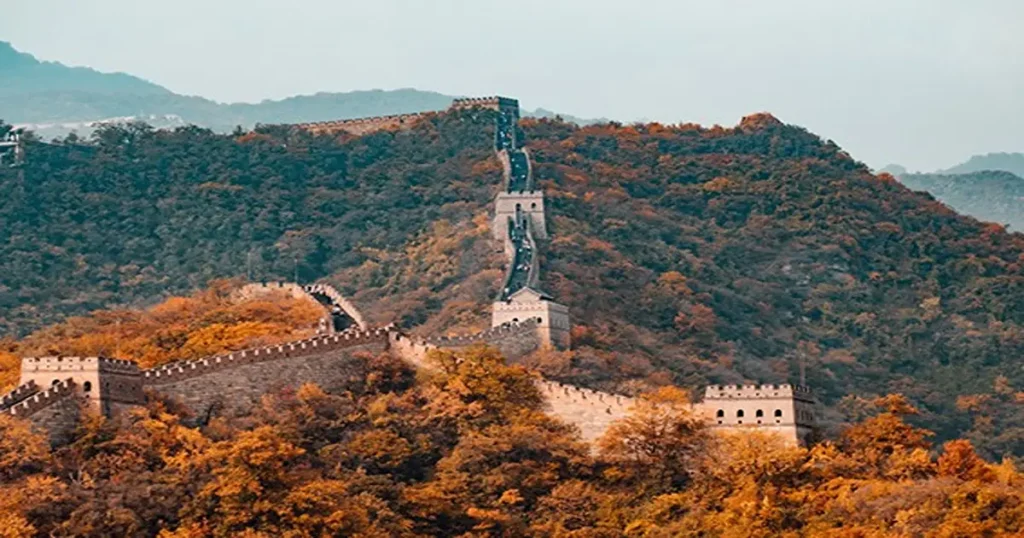
The Great Wall, often referred to as the
China Palace of Defense, is a symbol of resilience and protection, standing tall against the test of time and bearing witness to the nation’s fascinating history. From the dramatic vistas of Mutianyu to the remote stretches in Gansu, each section offers a unique experience. Marvel at the watchtowers, pass through the winding paths and let the breathtaking views leave you speechless.
Whether you’re a history enthusiast or a wanderer seeking unparalleled beauty, the Great Wall, China’s grandest palace, beckons you to explore its wonders. Discover the allure of this cultural treasure, feel its grandeur beneath your feet, and cherish the memories of standing on a true marvel of human accomplishment.
2. The Forbidden City
Discover the allure of imperial splendor as you step into the grand palace complex known as the Forbidden City, where Chinese emperors once held sway for centuries. This opulent treasure in the heart of Beijing stands as a magnificent testament to China Palace magnificence.
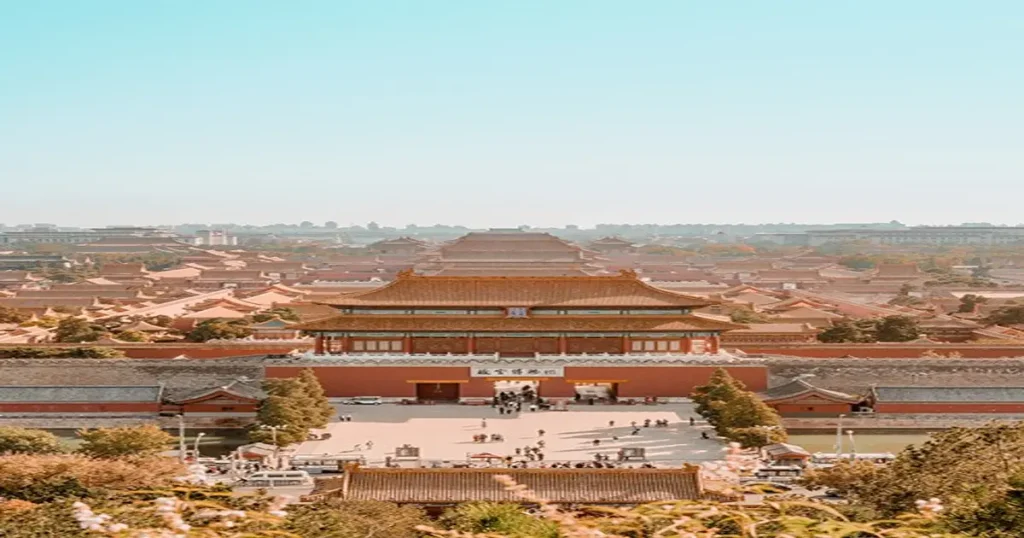
Built during the Ming Dynasty’s Yongle Period (1406 – 1420 AD), the Forbidden City showcases unparalleled architectural brilliance, with its sprawling wooden complex housing an exquisite collection of ancient structures. Every courtyard and pavilion within reflects a meticulous code of architectural hierarchy, symbolizing the emperor’s supreme authority.
Recognized as a UNESCO World Heritage Site in 1987, the Forbidden City’s distinction is a testament to its cultural significance and dedicated preservation efforts. Its captivating allure attracts visitors from around the globe, drawn to witness the splendor of China’s imperial past.
As you wander through this timeless masterpiece, the weight of history envelops you, and the echoes of the past resonate with each step. The Forbidden City’s beauty and historical value transcend borders, making it an enduring symbol of China’s cultural heritage.
Embrace the enchantment of the Forbidden City and experience the legacy of emperors, where a storied past awaits to captivate and inspire.
3. Potala Palace
Nestled atop the Red Hill in Lhasa, the Potala Palace awaits your discovery as a true architectural marvel and a profound symbol of Tibetan heritage. As one of the most revered structures in the world, thisone of the Best China Palace stands resplendent, casting a mesmerizing aura over the city.
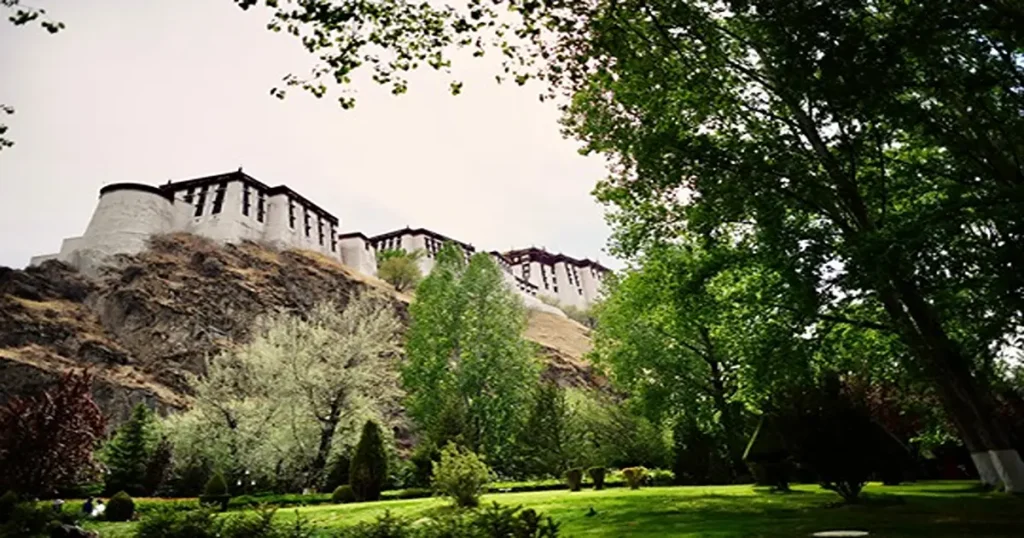
Ascending its steps, you’ll be captivated by the intricate design and artistic mastery that graces every corner of this majestic palace. Originally built in the 7th century by King Songtsen Gampo, the Potala Palace holds great historical and spiritual significance as the former residence of Dalai Lamas and the central hub of political and religious activities in Tibet.
Within its walls lies a treasure trove of Buddhist art, scriptures, and ancient artifacts that offer a glimpse into Tibet’s rich cultural heritage. As you wander through its ornate chambers and sacred halls, a sense of awe envelops you, reminding you of the countless pilgrims and spiritual seekers who have sought solace here for centuries.
Beyond its architectural splendor, the Potala Palace embodies the essence of Tibetan Buddhism, serving as a living embodiment of devotion and devotion to the teachings of the Buddha.
4. Confucian Temple, Qufu City
At this revered temple complex, pay homage to the great philosopher Confucius and immerse yourself in the wisdom and legacy he left behind. Step into a world of ancient halls and precious steles, where the teachings and principles of Confucius continue to inspire generations.
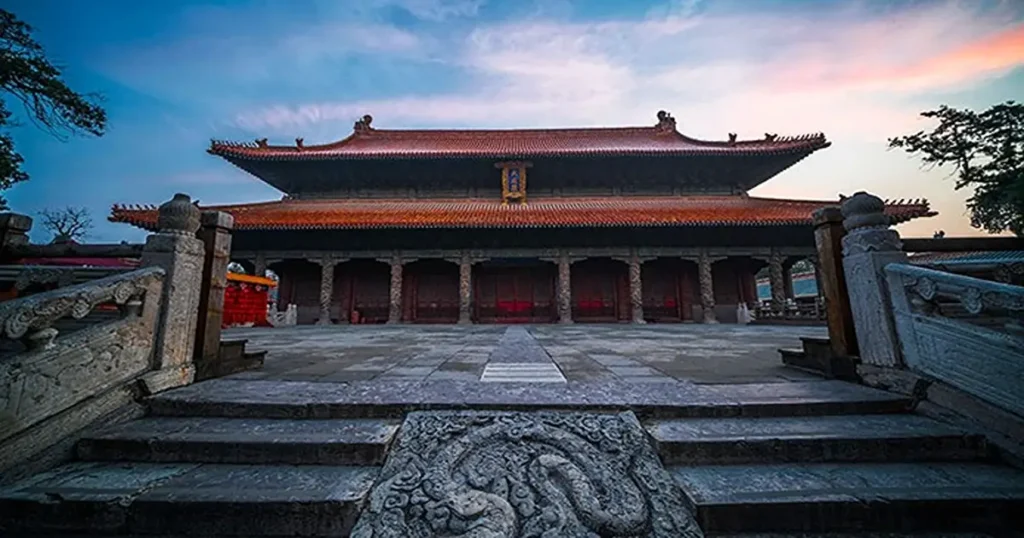
The Confucian Temple, with its rich historical significance, stands as a testament to the profound impact of Confucianism on Chinese culture and society. As you explore the intricate architecture and tranquil surroundings, you’ll feel a sense of reverence for the man who shaped the moral fabric of the nation.
Within the temple’s hallowed halls, a statue of Confucius stands tall, a symbol of respect and admiration for his teachings. The presence of 13 stele pavilions and 53 huge steles bearing records of Confucius’ life experiences further enriches the spiritual ambiance of this sacred site.
As you wander through the temple grounds, you’ll be inspired by the profound wisdom and timeless values that Confucius imparted to the world. The Confucian Temple, a place of contemplation and introspection, invites you to connect with the past, gain insight from ancient wisdom, and reflect on the enduring importance of ethical teachings in the modern world.
5. Terracotta Army
Behold the awe-inspiring sight of the extraordinary terracotta warriors, solemnly guarding the tomb of China’s first emperor, Qin Shi Huang, in the vicinity of Xi’an. Embarking on this journey, you’ll be transported back in time to witness the grandeur of an ancient burial site that holds invaluable historical and cultural significance.
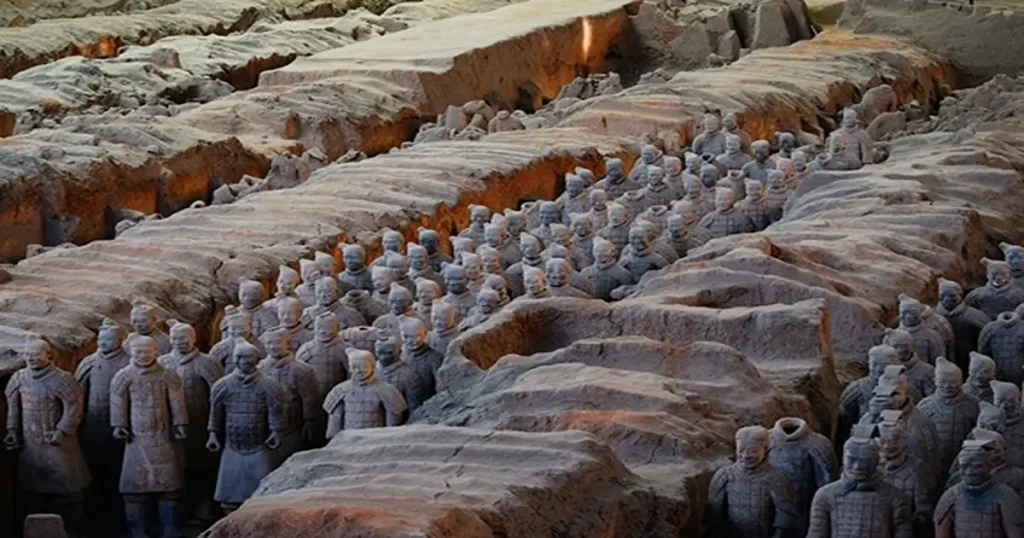
The terracotta army, a remarkable archaeological discovery, consists of thousands of life-sized soldiers, horses, and chariots meticulously crafted to protect Emperor Qin in the afterlife. As you stand before these remarkable clay warriors, you’ll be struck by their intricate details and the artistry that captures the essence of a bygone era.
Immerse yourself in the scale and magnitude of this mausoleum complex, where each figure carries a unique expression and purpose, reflecting the military might and organizational genius of ancient China. The Terracotta Army, designated as a UNESCO World Heritage Site, stands as a testament to the vision and ambition of a powerful emperor who sought to secure his immortality in history.
As you walk among these sentinel-like figures, you’ll feel a connection with the past and gain insights into the rich heritage of the Qin Dynasty. The Terracotta Army, an unparalleled archaeological wonder, invites you to delve into the mysteries of ancient China and marvel at the legacy left behind by Emperor Qin Shi Huang.
6. The Imperial Mountain Resort
Embark on a journey to the Qing Dynasty‘s royal summer retreat in Chengde, where imperial charm meets lush landscapes, creating an enchanting oasis of tranquility. This remarkable destination served as a respite for emperors seeking solace from the scorching summer heat in Beijing, and it continues to captivate visitors with its grandeur and historical significance.
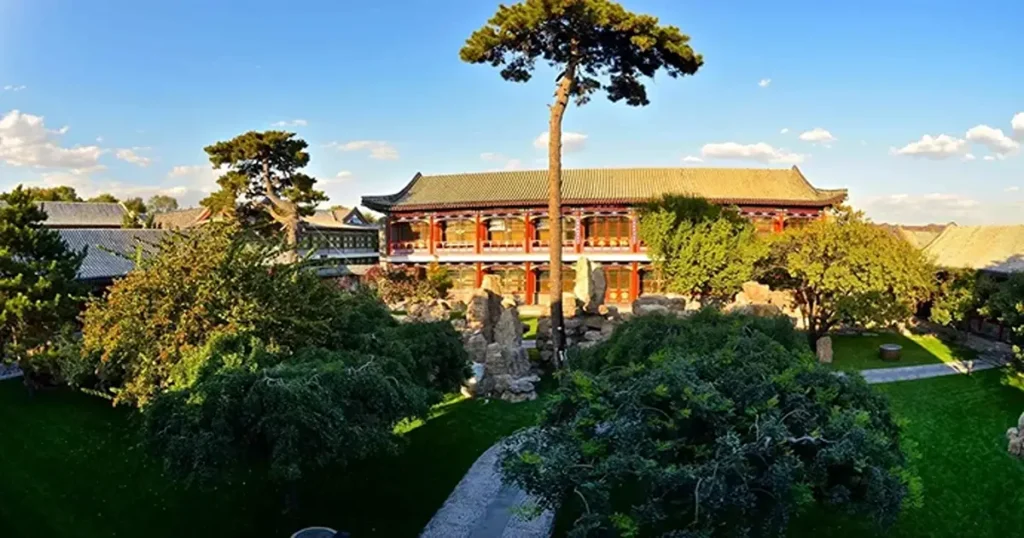
Nestled amidst picturesque hills and meandering rivers, the Chengde Mountain Resort (Bishu Shanzhuang) boasts an expanse of over 5.6 million square meters, making it the largest existing imperial garden in China. As you wander through its expansive grounds, you’ll encounter exquisite palaces, pavilions, and gardens, each reflecting the elegance and sophistication of Qing Dynasty architecture.
The Mountain Resort’s unique design amalgamates features of various Chinese landscapes, allowing you to traverse landscapes ranging from the rugged charm of the north to the idyllic beauty of the south. Stroll along tranquil lakes and explore intricately designed halls that once hosted imperial gatherings and cultural events.
Immerse yourself in the serenity of this one of the Best China Palace, and you’ll be transported to a bygone era, where emperors reveled in the splendors of nature while engaging in the affairs of the state.
7. Shenyang Imperial Palace
Embark on a captivating journey to uncover the impressive Mukden Palace, a harmonious fusion of Manchurian and Tibetan architectural styles, which once served as a prominent Qing imperial residence.
Nestled in the heart of Shenyang city, Mukden Palace stands as a living testament to the rich heritage of the Qing Dynasty, providing a glimpse into the opulence and grandeur that once graced its halls. Originally built during the late Ming Dynasty in 1625 and completed in the early Qing Dynasty in 1637, the palace is a remarkable showcase of cultural diversity and artistic brilliance.
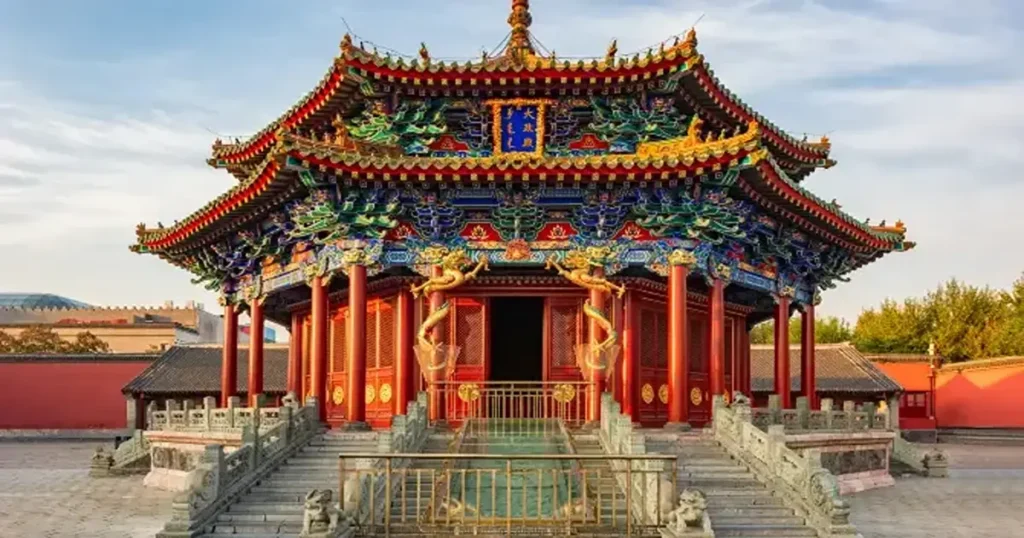
As you wander through its expansive grounds, you’ll be mesmerized by the intricate details and vibrant colors that adorn its halls, reflecting the influence of both Manchu and Tibetan cultures. The palace’s more than 90 buildings and 300 rooms exude a regal aura, transporting you back in time to a period of imperial splendor.
Discover the symbolism behind each architectural element and the historical significance of this once-gorges imperial palace and official residence of the Emperor. Mukden Palace, now a cultural gem, offers a captivating journey into the dynastic history of China, leaving you with an appreciation for the delicate balance between traditional and regional influences that shaped the architectural landscape of this remarkable China Palace.
8. The Mausoleum of Light
Discover the serene and stunning burial site of Empress Dowager Cixi, located near Beijing. This mausoleum, nestled amidst picturesque landscapes, pays tribute to one of China’s most influential and enigmatic historical figures.
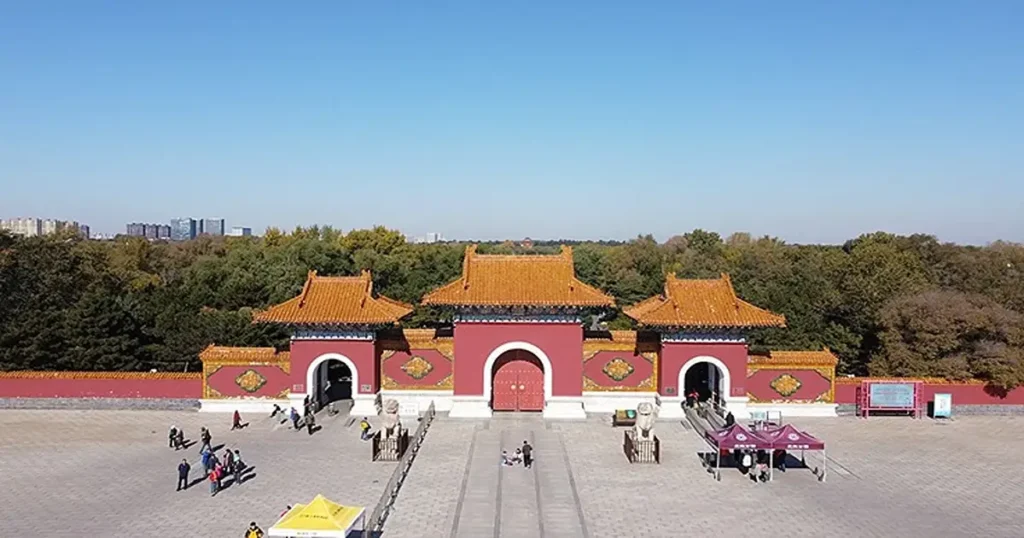
Surrounded by lush greenery, the burial site exudes a sense of peace and reverence, offering a tranquil sanctuary to honor Empress Dowager’s memory. Ornate architecture and meticulously manicured gardens reflect the grandeur of her reign during the late Qing Dynasty.
As you explore the sacred grounds, encounter intricately designed structures and carefully preserved artifacts, providing insights into the remarkable life of Empress Dowager Cixi and the tumultuous era she lived in.
This poignant site invites reflection and contemplation, offering a glimpse into China’s imperial past and the enduring legacy of a powerful ruler. Stand before this historical mausoleum, and you’ll be touched by the grace and resilience of a woman who left an indelible mark on China’s history and cultural heritage.
9. Gyantse Dzong or Gyantse Fortress
Explore the ancient Gyantse Fortress, which offers panoramic views of the town and the surrounding Himalayan landscape. This historic landmark in Gyantse, Tibet, stands as a testament to China’s rich cultural heritage and strategic significance.
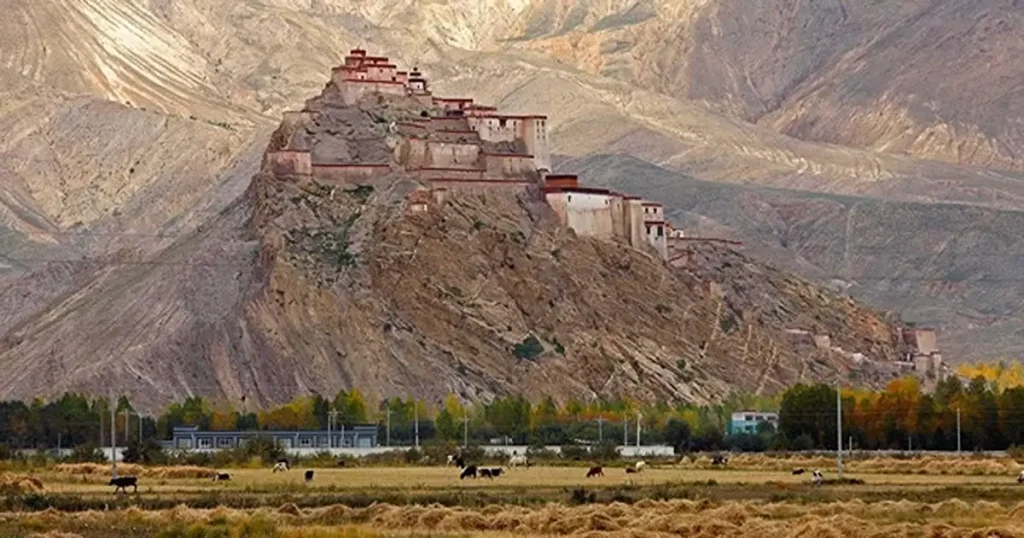
The fortress’s imposing walls and ancient architecture transport you back in time, evoking the spirit of ancient China. From the top, marvel at breathtaking vistas of the charming town and the awe-inspiring Himalayan mountains, connecting with nature’s beauty. Uncover hidden chambers and well-preserved structures that offer insights into China’s past and the fortress’s historical context.
A visit to the Gyantse Fortress is an enriching experience, combining natural beauty, historical significance, and cultural exploration, leaving you with a profound appreciation for China’s rich tapestry of history and its majestic surroundings.
10. Hailongtun Castle
Delve into history at Hailongtun Castle, a well-preserved UNESCO site that witnessed fierce battles and stood as a vital military stronghold. Situated in a picturesque landscape, this castle offers a fascinating journey back in time to a period of strategic importance and military prowess.
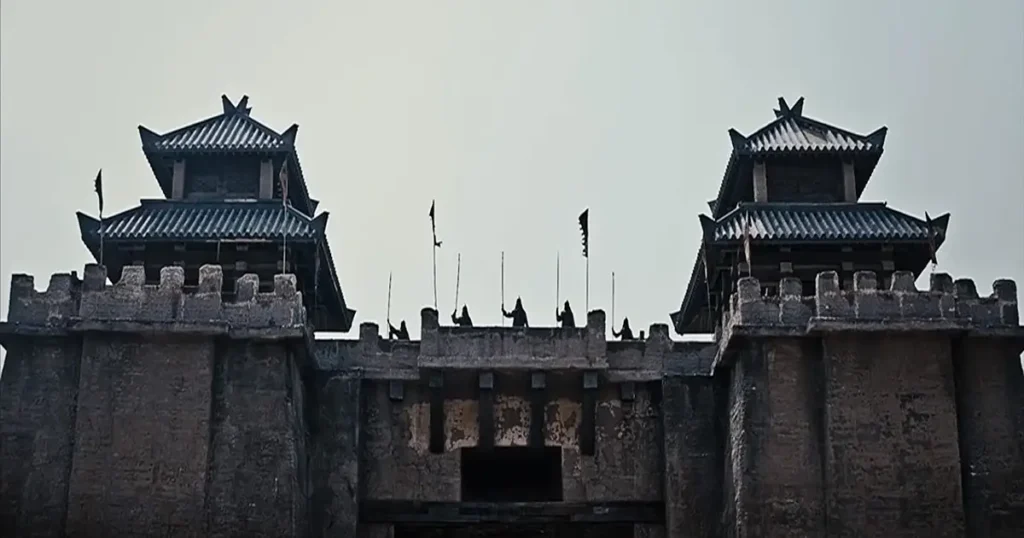
As you explore the castle’s impressive structures, you’ll feel the echoes of past conflicts that shaped the region’s history. With its strategic location and fortified walls, Hailongtun Castle played a crucial role in defending the area and was witness to numerous historical events.
Step inside the castle’s walls and discover hidden chambers, watchtowers, and defense systems that offer insights into ancient military strategies. The meticulous preservation of this historical gem allows visitors to vividly imagine the castle’s vibrant past.
Hailongtun Castle’s designation as a UNESCO site underscores its significance as a cultural treasure, providing a glimpse into the rich heritage and resilience of ancient times. A visit to this remarkable fortress is a captivating experience, connecting you with the valor of the past and instilling a deep appreciation for the importance of preserving historical landmarks.
Final Thoughts
China offers a treasure trove of mesmerizing palaces and castles that are steeped in history and cultural significance. From the iconic Great Wall to the splendid Forbidden City and the serene mausoleums, each destination offers a unique glimpse into the grandeur of China’s imperial past. Embarking on a journey to these top 10 places allows travelers to immerse themselves in the rich tapestry of China’s heritage, leaving them with unforgettable memories of architectural marvels and captivating historical narratives.
Enjoy Our Featured Video
If you enjoyed reading the Best China Palace article, I’m sure you’ll be delighted to watch the BEST Places In Southeast Asia To Visit in 2023. Explore now and plan your next adventure!
FAQs
What is the palace in China called?
The Best China Palace is commonly referred to as the “Forbidden City.” It is also known as the Imperial Palace and was the Chinese imperial palace during the Ming and Qing dynasties.
What is the largest palace in the world in China?
The largest palace in the world is the Forbidden City in Beijing, China. It covers an impressive area of 180 acres and boasts over 980 surviving buildings, making it an architectural marvel and a UNESCO World Heritage Site.
Why is it called the Forbidden City?
The Forbidden City earned its name because access to the imperial palace was strictly restricted. Only the emperor, his immediate family, and selected officials were allowed inside. Ordinary citizens were forbidden from entering, hence the name “Forbidden City.”
Does China have palaces?
Yes, China has several palaces, each with unique historical and cultural significance. Apart from the Forbidden City, other notable palaces include the Summer Palace, Potala Palace, Shenyang Imperial Palace, and many more, each showcasing China’s rich imperial history and architectural splendor.
Enjoy reading this article? Please consider subscribing to our YT Channel for more travel inspiration, and book your tour here to explore China’s captivating palaces and castles firsthand. Let the magic of history and culture come alive on your journey! Safe Travels!







